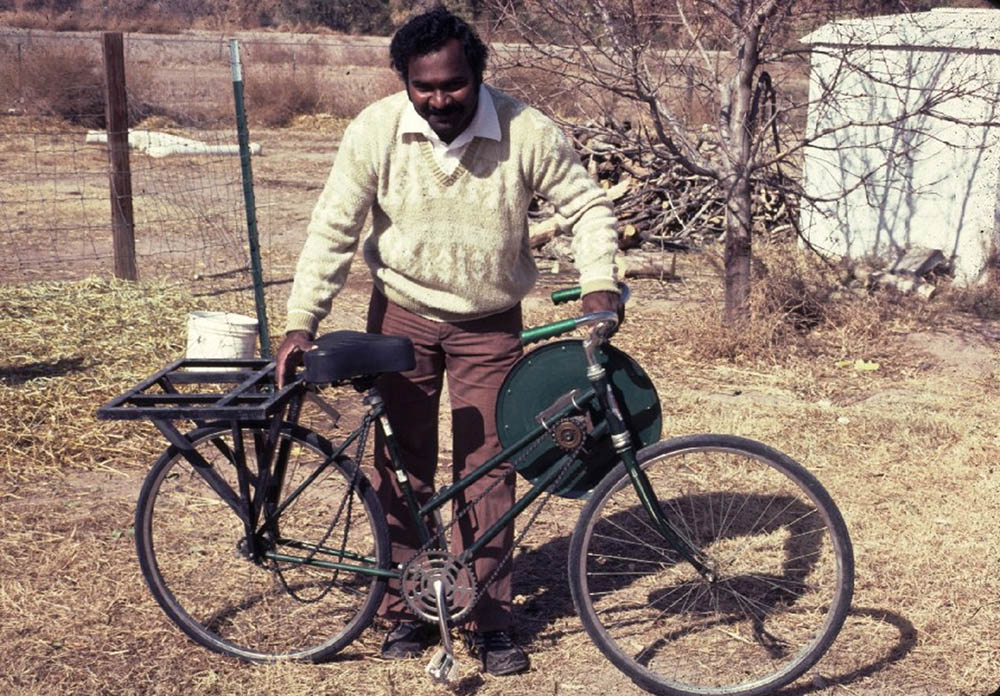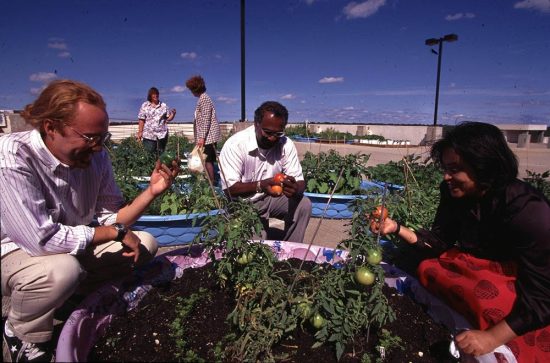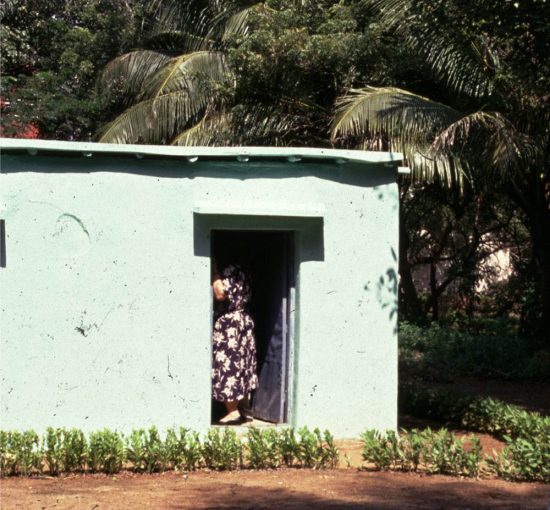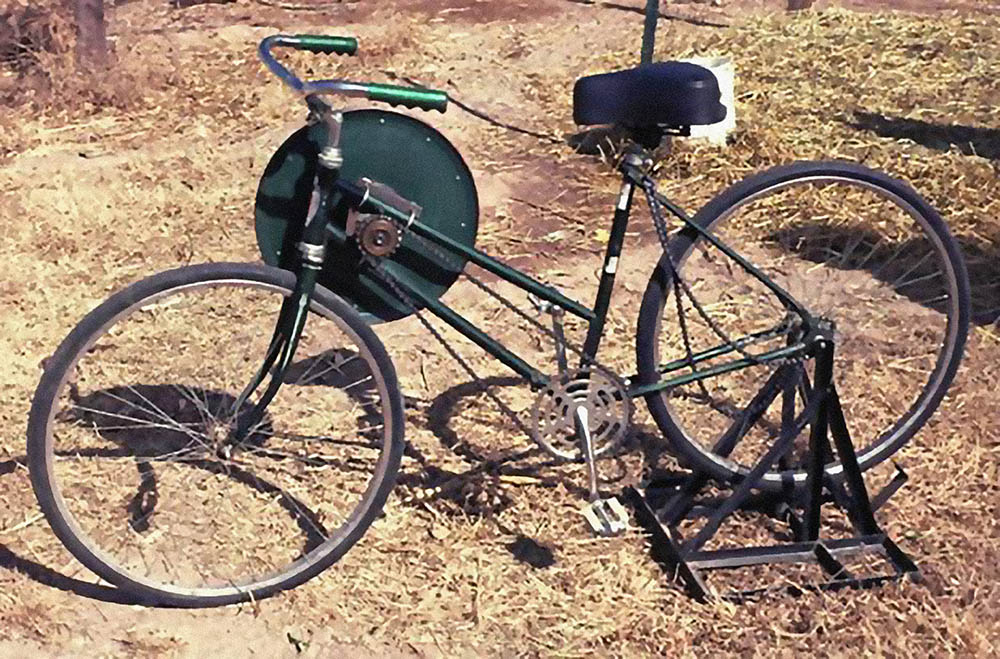
The Dual-Purpose Bicycle, invented by engineering professor Dr. Job S. Ebenezer, is an ingenious method using a bicycle for both transportation and for power production.
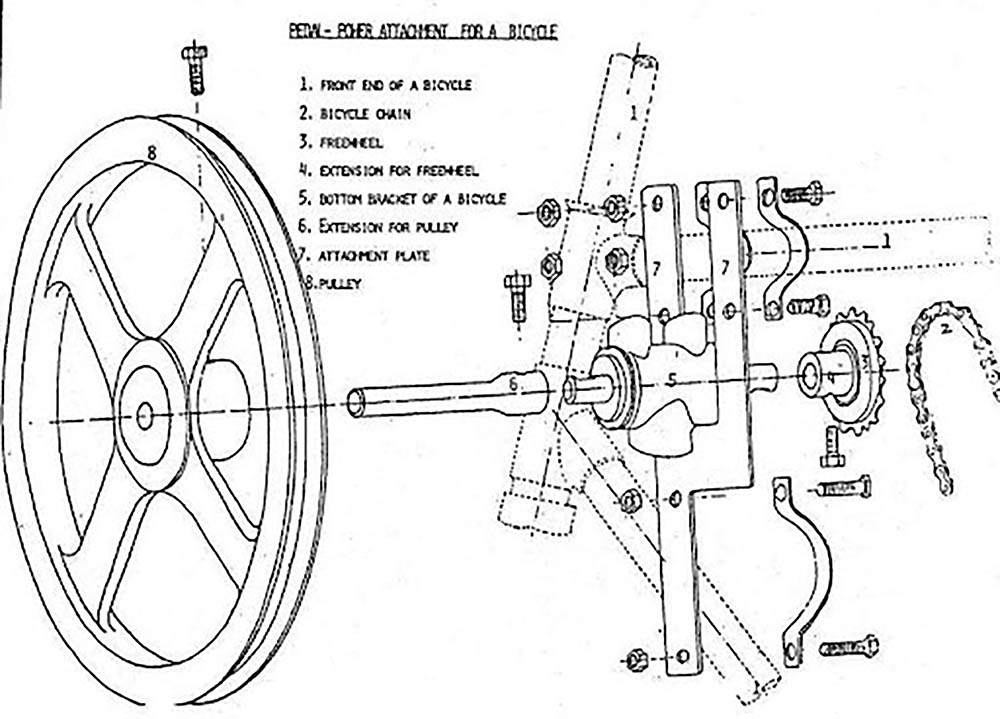
ADVANTAGES:
- Cost Effective
- Can power many implements
- Use of many bicycle parts which can be salvaged from old bicycles
- Ease of changing from transportation mode to power production mode
In the late 70’s, while visiting family in Tamil Nadu, India, Dr. Ebenezer was similarly affected by the extreme poverty he encountered. His brother inspired him to use his engineering skills to develop something that could help small rice farmers increase their profits. The standard practice was for the farmers to sell their unprocessed rice to processing facilities. The farmers worked incredibly hard, over 10 hours a day in the hot sun, but they were making next to nothing. By processing their own rice, farmers could earn 4x the profit.
Dr. Ebenezer left India determined to find a pedal-powered solution.
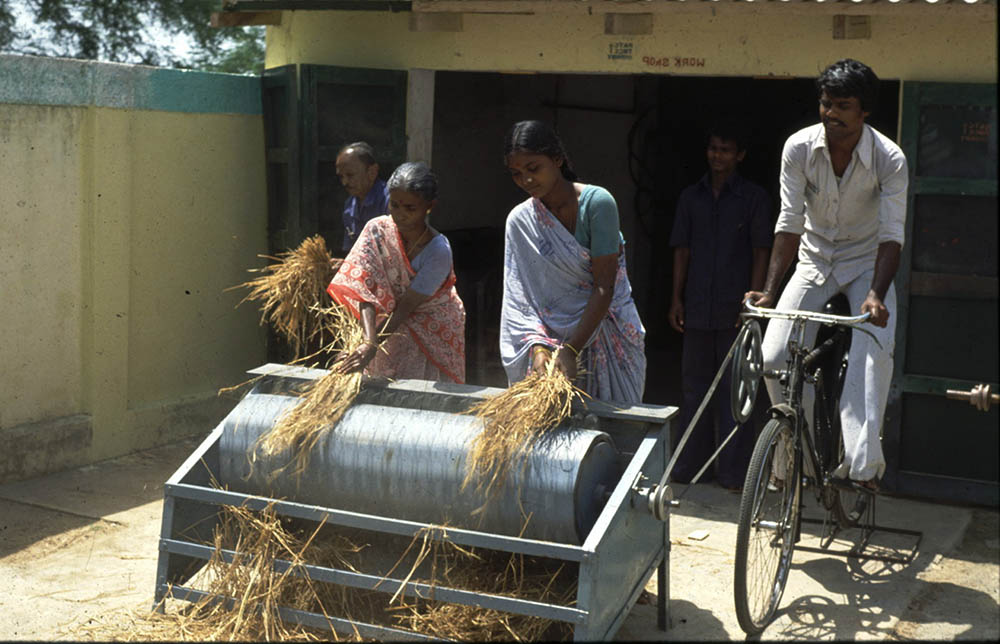
DESIGN CRITERIA
- Use of simple tools to change from transportation mode to power production mode
- Fabrication and repair by local technicians
- Use of simple tools available to users
- Low cost
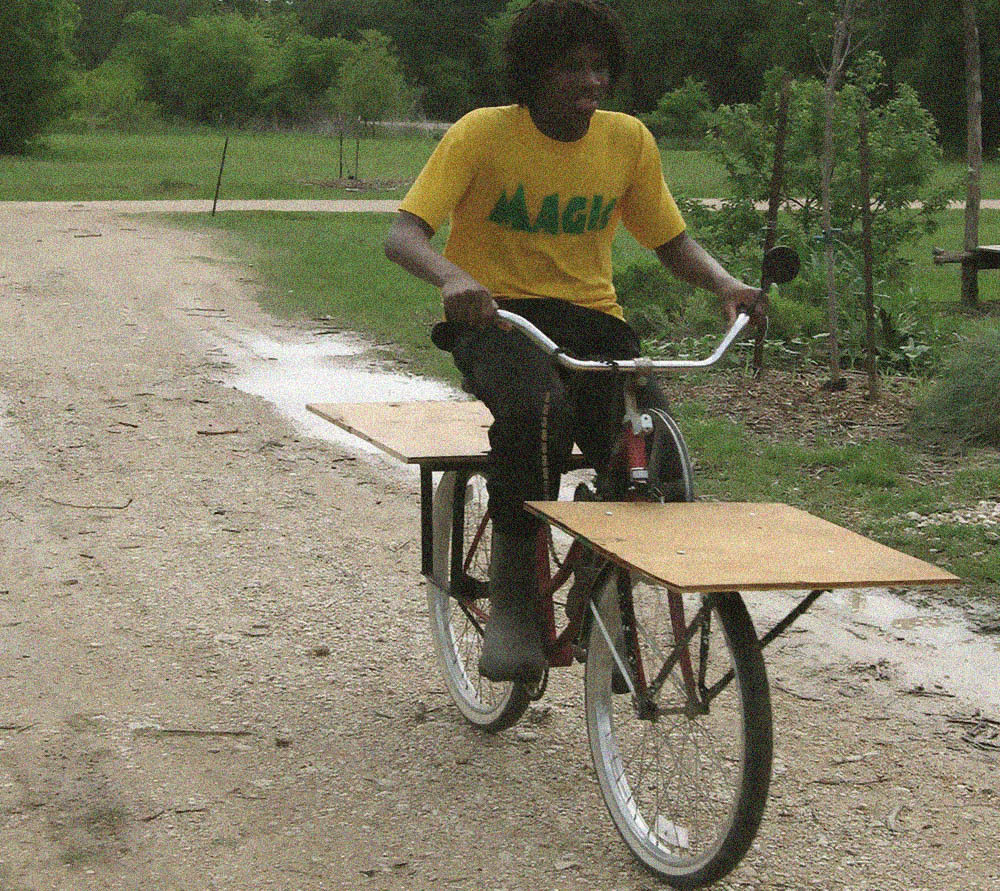
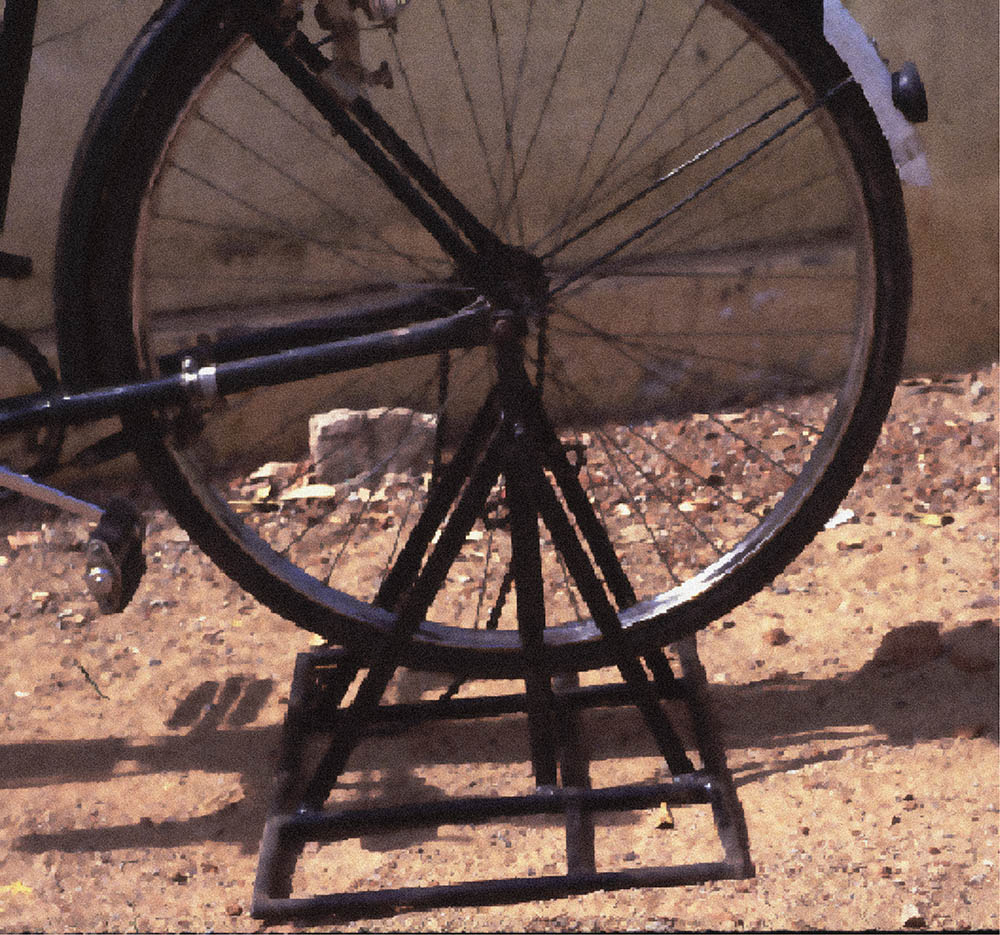
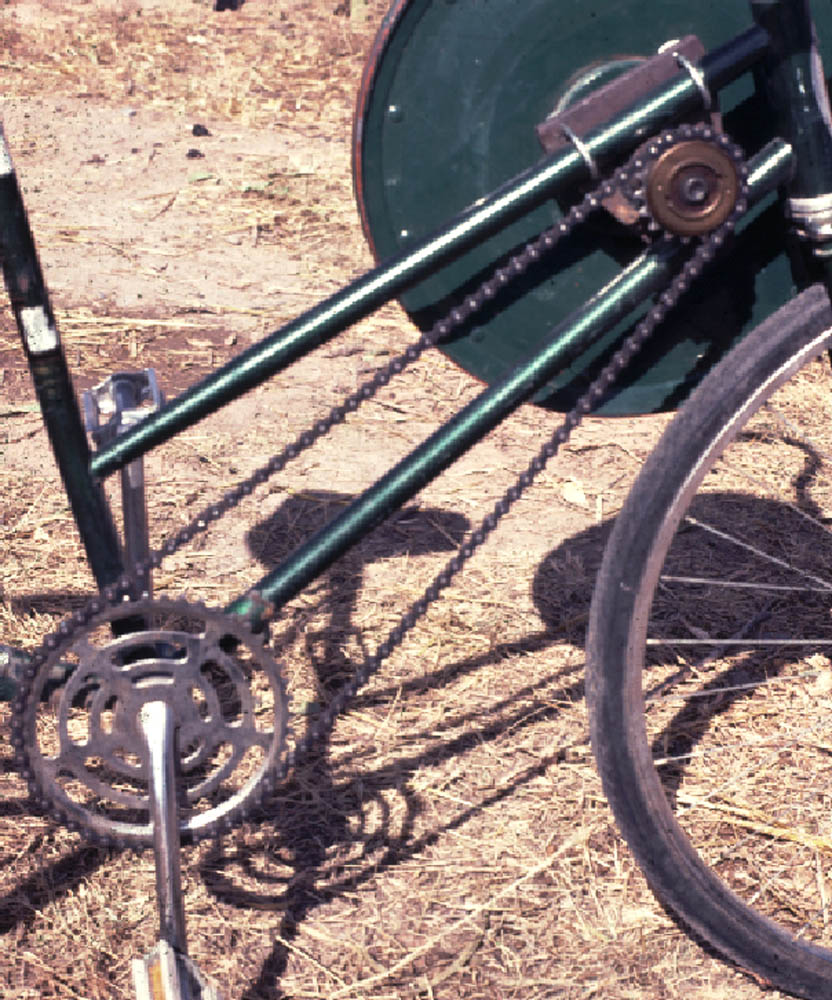
Once back in the states Dr. Ebenezer put forth a design challenge to his engineering students, what could they come up with, using a bicycle, that would address this need, while staying low cost, made of locally available materials, and retain the bicycle’s functionality for transportation. After reviewing what the students came up with Dr. Ebenezer refined their concepts into the Dual Purpose Bicycle (DPB).
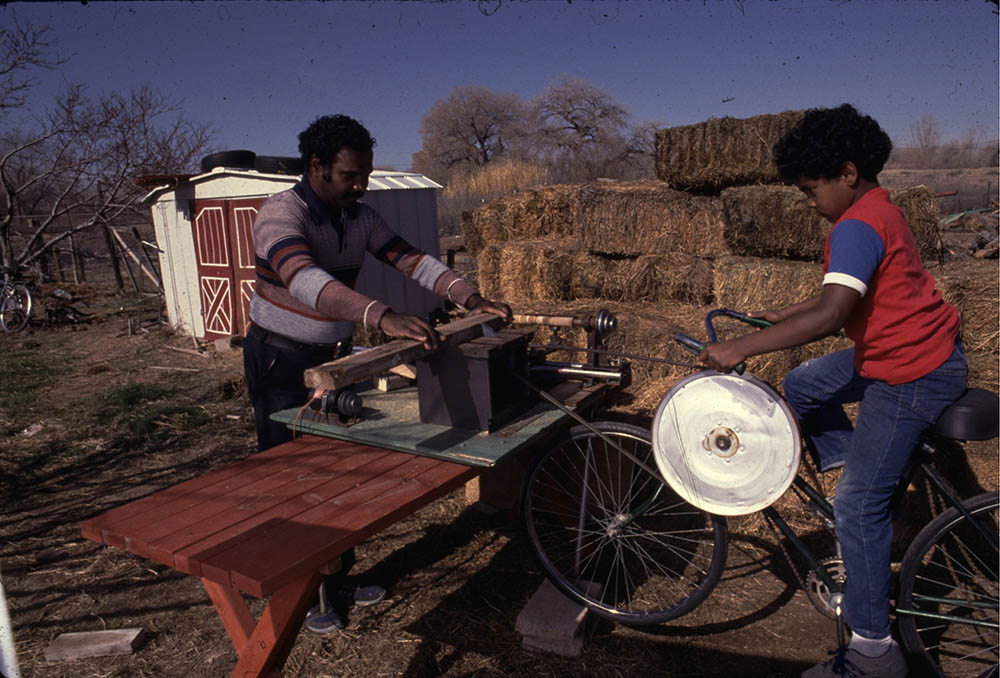
The DPB was designed to serve as a power-take-off that could operate a number of pieces of equipment, not just rice threshers. Dr. Ebenezer returned to India in 1979 with his creation. It was proven to be quite effective at many things that required less than one horse power, like peanut shelling, wood working and pumping water.
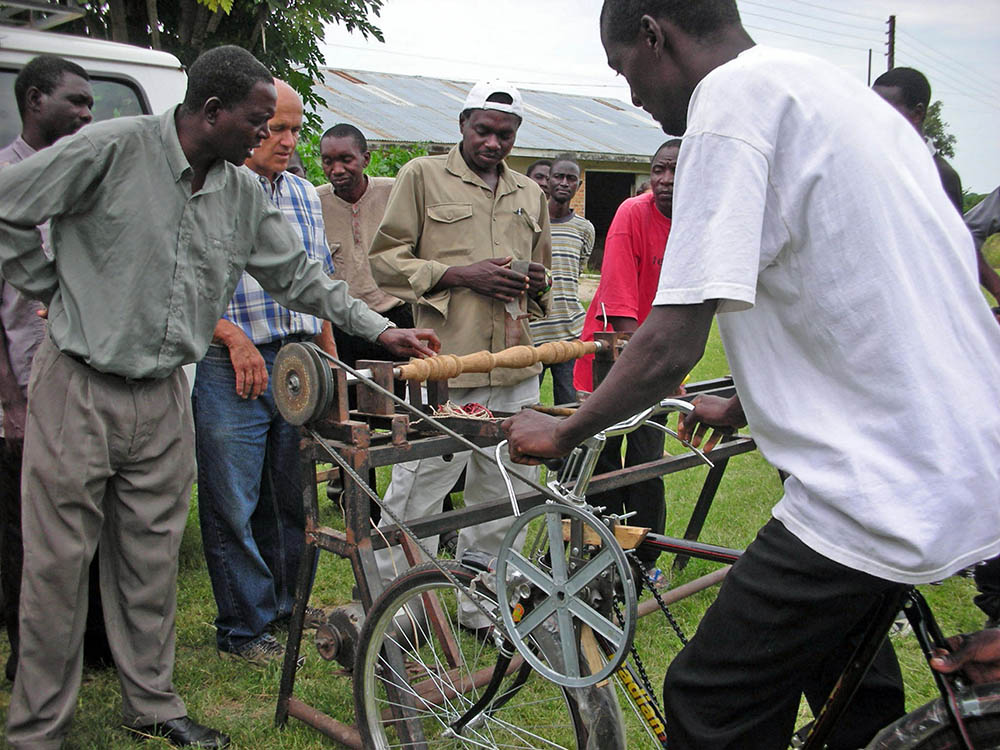
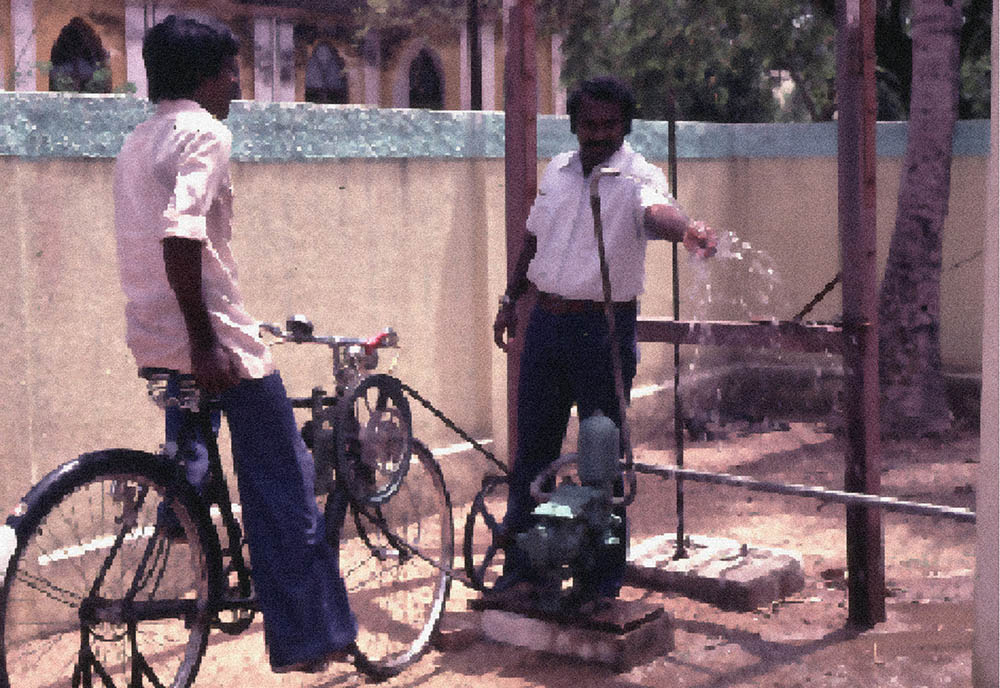
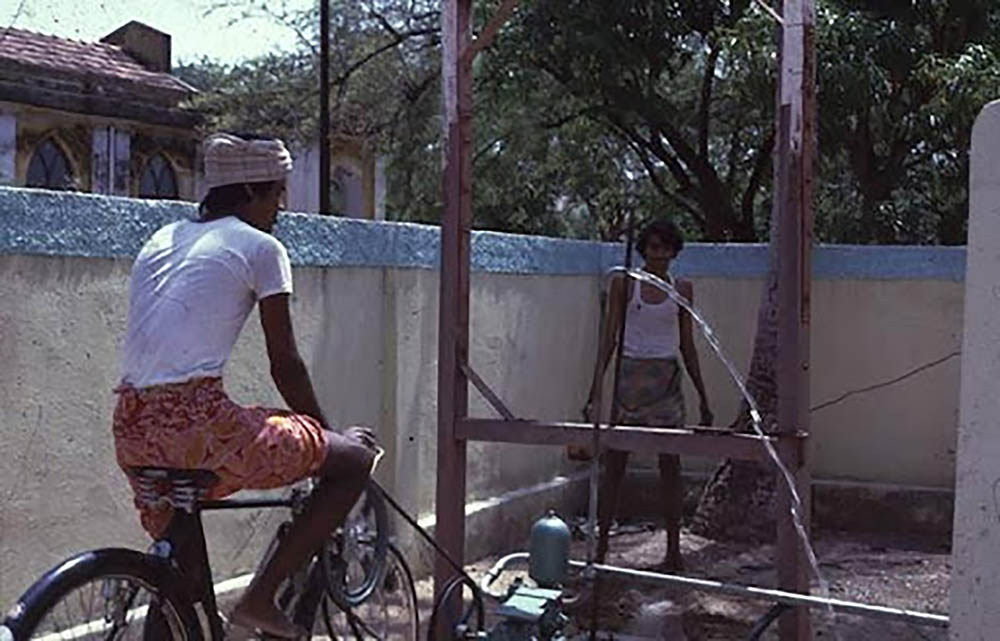
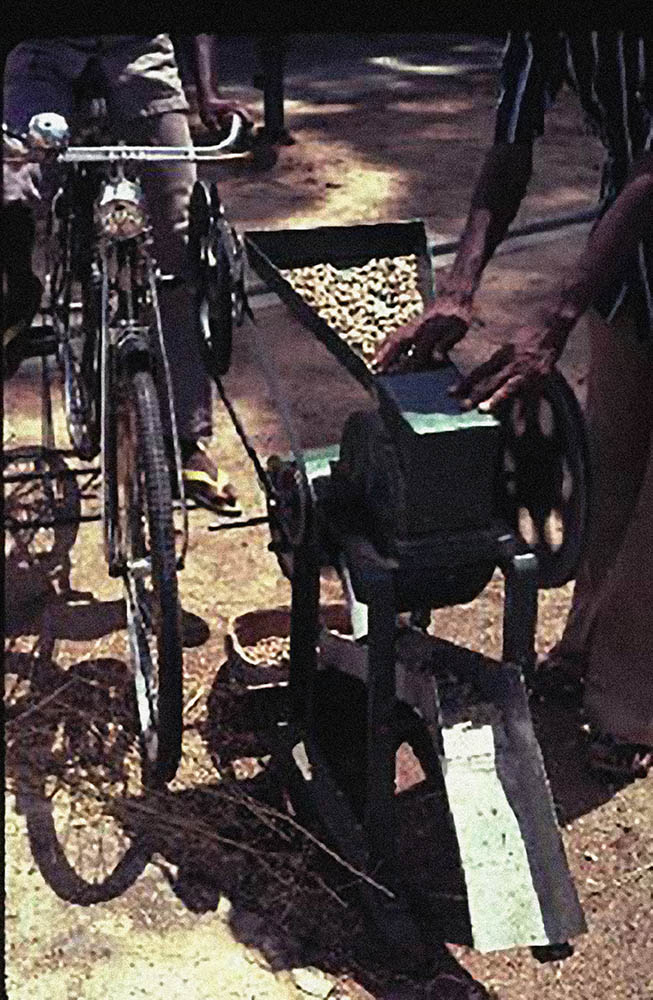
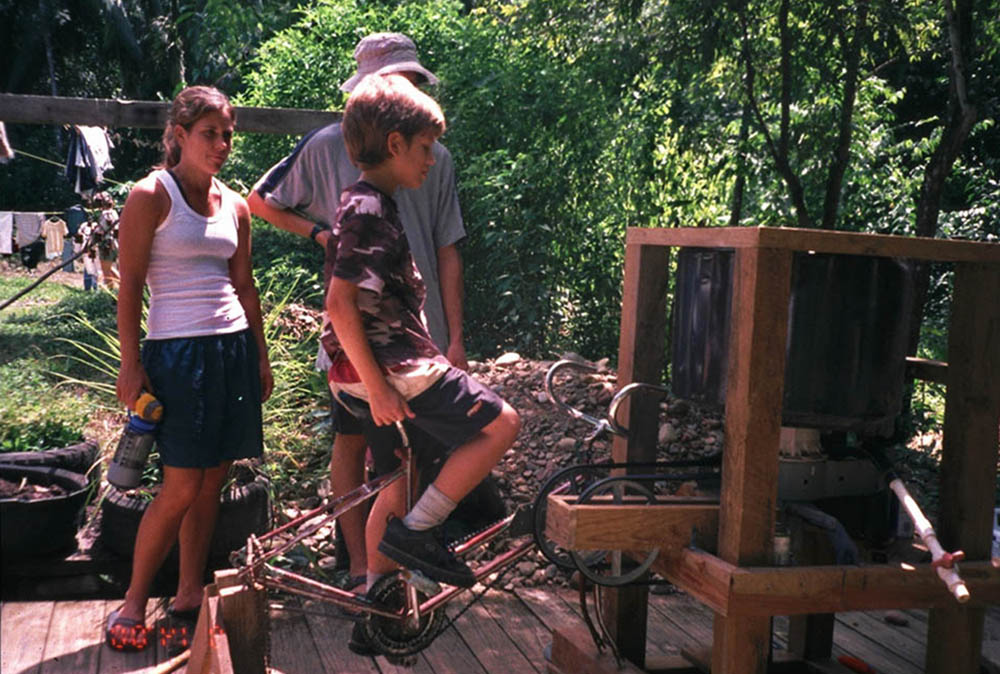
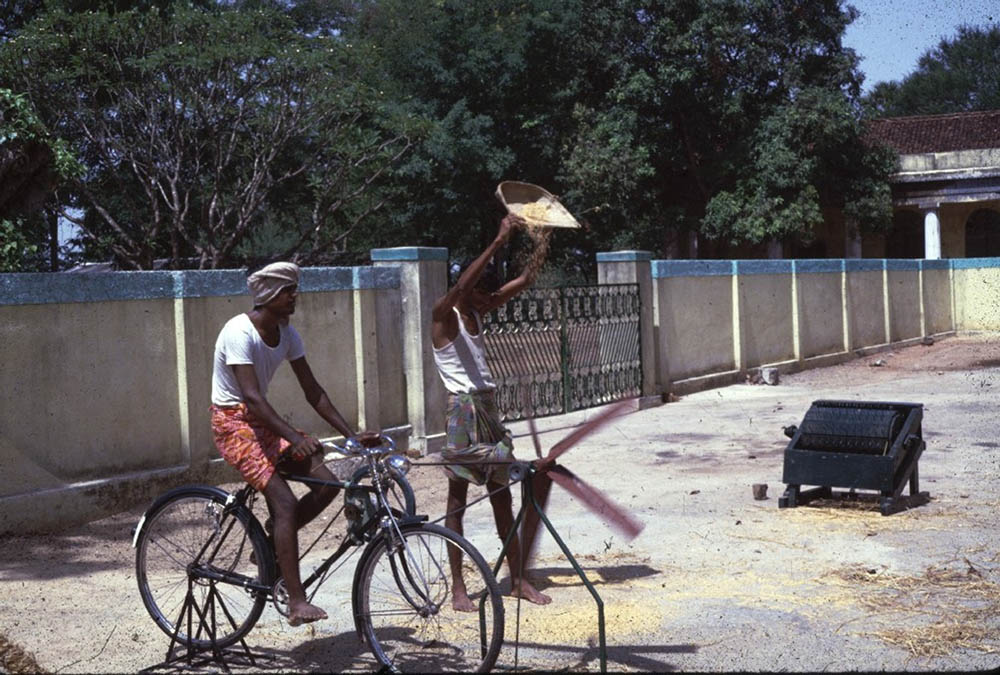
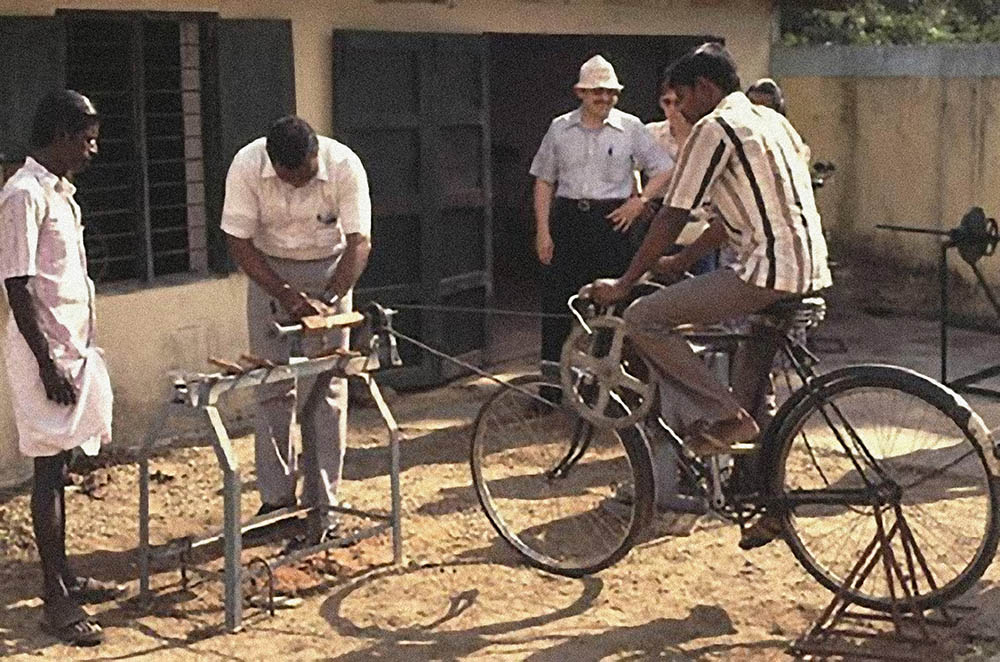
Millions of Bicycles are used for transportation in less income countries. These bicycles are used mostly for transportation. There is a tremendous opportunity to utilise bicycle resources for other ends, either through the DPB, or creating implements that function stand alone.
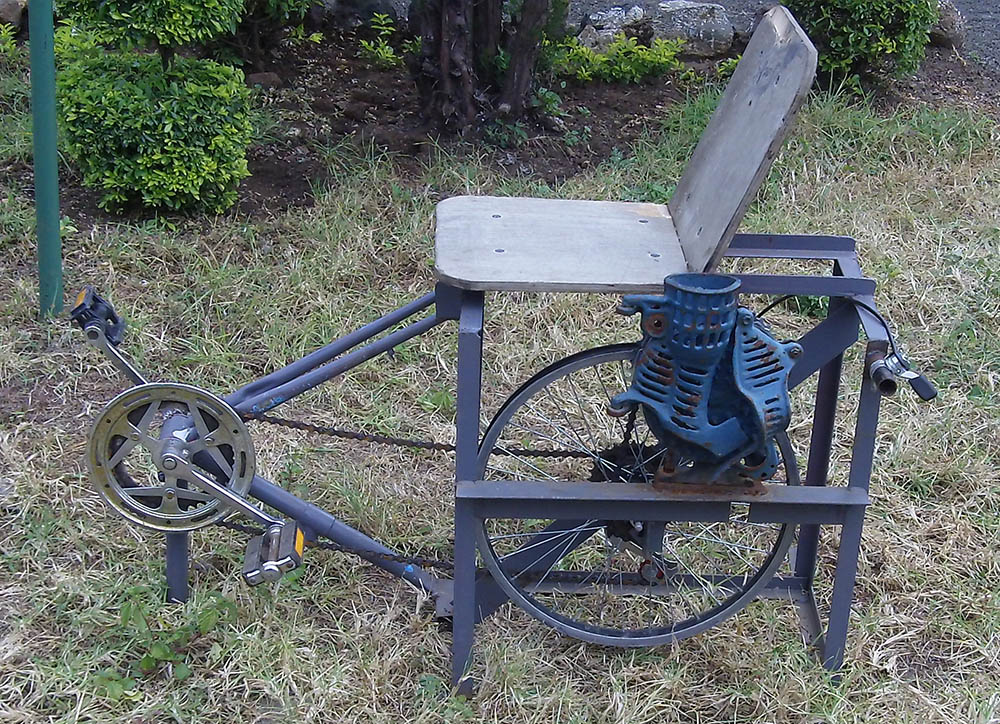
Pedal Power introduced in the past several decades to operate small implements use bicycle parts such as, chains, cranks, frames, and various other parts of a bicycle. Through the growing network of Bicycle projects across the world, our hope is to organise the reuse of bottom brackets from bicycles otherwise unusable. These parts can be easily extracted and sent in volume to areas that need them.

